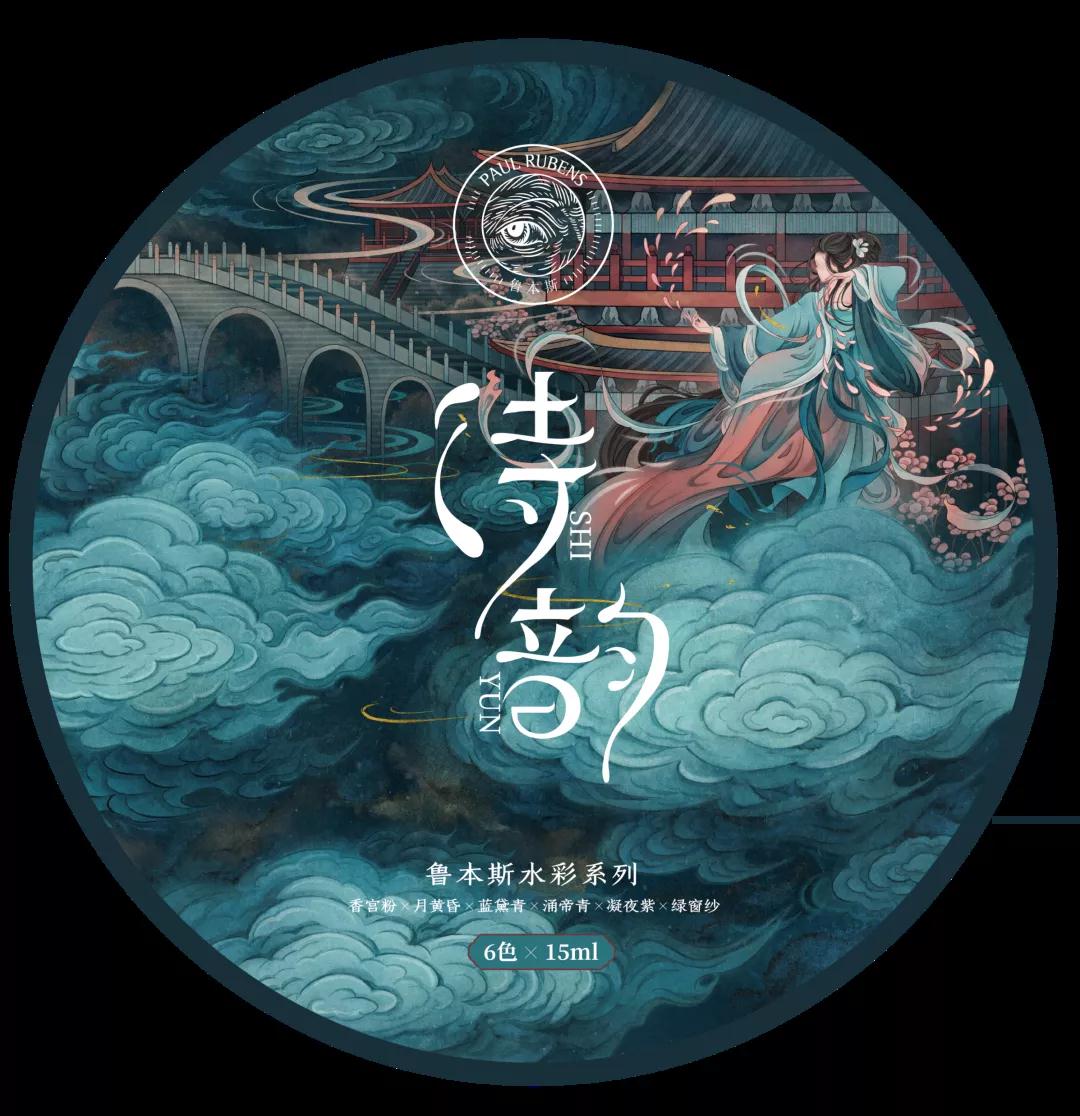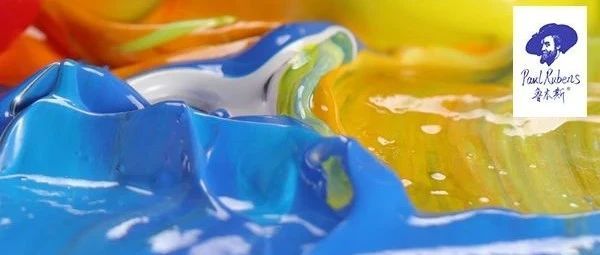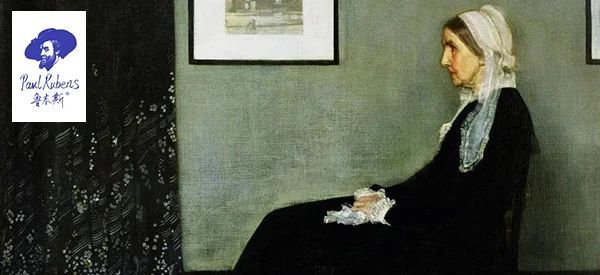
As we all know, as long as we have some basic colors, we can mix and blend the colors we want, however, there is one color that cannot be obtained by mixing other colors. We can only start with a special white pigment, so someone once jokingly said, "Whoever has white pigment, we are good friends."
The white pigment is also a very important oil paint for oil painting, in terms of its use, it is also very versatile, that is, it can enhance the brightness of the color, but also can reduce the purity of the color. Of course, white is also used in the real, near and highlight areas, and it is even used in the shaping of forms. Since white pigment has so many roles, how do you use it in the end?

Let's talk about these common types of white in oil paints, and finally we will share with you two "special" whites, where exactly is it "special"? We will reveal later!
Lead White
The chemical composition of lead white is lead carbonate, which is the best kind of white in the traditional European oil painting color.

Its advantages are: better covering power, good stability of pure lead white, not easy to yellowing, fast drying speed, strong color layer after drying.
Its disadvantage is that lead white has strong toxicity. Even the inhalation of dust containing lead white can have serious consequences, so the grinding of lead white can bring danger to people. (And it should not be used in direct contact and swallowed, otherwise it will cause abnormal human metabolism, headache, nausea, vomiting, high fever, irritability, convulsions and even will be cerebral edema, psychosis or local brain damage and other syndromes.)
Mixed color use effect.
Lead white and quinacridone rose mixed color

Here the lead white plays a role in reducing the color saturation, and from the picture can also be seen vaguely a little pearlescent effect.
Tips for use.
Lead white is generally used as a base in oil painting. Lead white contains less oil, the brush strokes are obvious when painting thickly, and the adhesion is very strong and shiny.
Before the color of the picture dries completely, always put the picture in the light, do not put it in the dark for a long time, otherwise the white will become yellow, or even become very yellow.
If the lead white or other white color becomes yellow due to the lack of light, you can turn the picture in the dark place to the bright light, but do not directly sunlight, after a day or two, the yellow pigment will be obviously reduced. After the yellow pigment receded, if the color is still not dry, again long back to the picture of the dark place, then the picture will become yellow again.
Zinc White
Zinc white is chemically composed of zinc oxide and is a slightly transparent and soft white color.

Its advantages are: good transparency, which is also the best among the white oil paints at present. Good stability, not easy to turn yellow after a long time. The color layer is stronger after drying. It also has the advantages of inhibiting the growth of fungi and preventing the chalking of the color film of the pigment coating.
The disadvantages are: low coloring power, slow drying speed, and more oil eating.
The effect of mixed color use.
Zinc white and quinacridone rose red

Zinc white reduces the saturation of quinacridone rose and has the effect of softening the color.
Tips for use.
In oil-based pigments, zinc white, when used alone in thick coats or mixed with other color pigments, tends to cause cracking of the color layer and should be avoided when painting.
Zinc White turns lemon yellow when exposed to heat (in direct sunlight) and returns to white when cooled.
Zinc White has a blue tilt and is cool.
In various painting methods zinc white is suitable for thin painting, so that the picture presents a wet, subtle, elegant and quiet artistic effect.
Zinc Titanium White
Zinc Titanium White (also known as Mixed White) is a mixture of Zinc White and Titanium White, which is a more ideal white color for oil painting.

It has the advantage of maintaining the whiteness, fastness and coverage strength of titanium white, while having zinc white to prevent chalking and mildew.
Although both are white, zinc white is cold, titanium white is warm, zinc white is transparent, titanium white is strong in coverage, zinc white is oily, titanium white is dry, and zinc titanium white has the advantages of both, making it the most commonly used white pigment in oil sketching.
The effect of mixing colors.
Zinc titanium white and quinacridone rose red

Zinc Titanium White combines the pigment properties of zinc white and titanium white, softening the color while giving it a powdery appearance.
Tips for use.
Zinc Titanium White is suitable for wet painting in various painting methods, allowing for uniform tones and a natural transition of color layers.
Titanium White
Titanium white is chemically composed of titanium dioxide and is a white color with excellent coverage and coloring power.

Its advantages are: excellent covering and coloring power, faster drying time than zinc white. It is an inert pigment and is not affected by climate.
Its disadvantage is: it will turn slightly yellow in the long term.
The common titanium white on the market now has a long drying time. At present, there are also a few manufacturers who produce fast-drying titanium white, which has the basic characteristics of titanium white pigment while using alkyd resin as a color-carrying agent to greatly shorten its drying time and improve its yellowing property.
Effect of color mixing.
Titanium white and quinacridone rose

Here titanium white shows its extremely strong covering power and is the pinkest color of all white pigments.
Tips for use.
Mixing titanium white with other pigments will result in a higher coverage of the other pigments. Titanium White can also provide the properties of other white pigments. Adding a little linseed oil to Titanium White turns it into a translucent white layer, just like zinc white.
In oil painting techniques, titanium white is used in direct techniques and is rarely used in classical techniques. Among the various painting techniques, titanium white is suitable for thick and dry painting. When applied thickly, it gives the picture a clear brushstroke, heavy and powerful. The effect is strong and emotional. And when used for dry painting method can be just right point out the highlights, light exposure more natural and real.
Having said that, the four common white pigments are almost finished. At the end, we put the pictures of various white pigments and other pigments when mixing and mixing together, so that you can see the difference. (The other pigments used here are transparent colors.)

It is obvious from the picture that zinc white reduces the saturation of color, and lead white also reduces the saturation of color and makes the color more metallic, so sometimes people also use lead white instead of pearlescent pigment. Zinc titanium white has the pigment characteristics of both zinc white and titanium white, which can reduce the color saturation and make the pigment powdered. While titanium white is directly powdering the pigment, which very intuitively reflects its strong covering power. With this visual comparison of color mixing, I hope that it will be of some help to you in using these pigments.
In addition to the above, it is also important to mention here that the ideal white pigment should not absorb any visible light and have a high scattering coefficient. The main factor controlling the scattering ability is the difference of refractive index between the pigment and the base material, so the refractive index of the pigment material is the key property of the white pigment.
The following are the refractive indices of some white pigments.

The refractive index of a white pigment is related to the covering power of the white pigment, the greater the refractive index, the stronger the covering power of the pigment. Among the known pigments, titanium dioxide has the largest refractive index, it has the largest refractive index with polymers, the strongest covering power among all white pigments, and the superior coloring power. It is the ideal white pigment among the available white pigments.
Speaking of this, as an inorganic color white pigment, we have to mention its density, and what is the relationship between density and pigment?
As we all know, the most important component of oil paints is the pigment. In inorganic pigments, if the density of a pigment is higher, the heavier the pigment will be when it is produced in the same quantity and ratio. It also means that its purity (saturation) is higher. (This is of course excluding fillers.)
Now let's look at the density of these common pigments.

As you can see from the above chart, the most dense of these common white pigments is lead white (lead carbonate), followed by zinc white and finally titanium white. From the point of view of physics, if a substance is denser, the heavier it should be. So generally speaking, if the same specification of lead white, zinc white and titanium white, then the heaviest should be lead white. Let's take a look at the weight of these pigments in the following chart.

Lead White

Zinc White
From the picture, we can see that the density of lead white is indeed much heavier than zinc white, and here the weight of the pigment and the purity of the pigment itself is proportional to its saturation, which means that the heavier the weight, the greater the proportion of the pigment in this pigment to the oil pigment, and the higher the purity (saturation) of the pigment. If you are interested, you can also use the same level of lead white, titanium white, etc. to test it.
After the introduction of refractive index and density, the following is the official entry of two special white pigments.

Original color titanium
First of all, a color card.

Through the color card, you may be a little confused, do not panic, and listen to me slowly.
Titanium dioxide, the main component of primary titanium, is the same as the main component of titanium white, but the production process is different, resulting in two completely different colors of pigment.
Titanium white powder extracted from the mineral itself has a yellowish tint to it. The original color of titanium dioxide is retained, resulting in a completely non-white, but white pigment called primary titanium dioxide.

Because the main components of titanium white and primary titanium are the same, primary titanium has similar pigment properties to titanium white.
For example, its very strong covering power and faster drying time than zinc white. And it is also less prone to yellowing.
It is used in painting as a base color for skin tones and as a transition color when blending with other colors, which can increase the coverage of colors and also increase the contrast between light and dark, making the picture more colorful and light. And because of its strong covering property, it is generally used in direct painting method.
Gray Titanium White
Gray titanium white is the same as the original color titanium, its main component is also titanium dioxide, the same we also first look at its color card.

See the color card, everyone's mind is not the image of the cement gray came to mind? The color really matches its name, "titanium gray".
Titanium gray is the least seen color in the titanium white phase, uncalcined bleached titanium white phase, similar to the color of cement gray, but also has a strong covering, drying speed and titanium white, but also not easy to yellowing.

For its use is somewhat similar to lead white, can be used as a base color, for oil painting priming. However, it is not as toxic as lead white, so it is more comfortable to use.
After a brief introduction of primary titanium and gray titanium white, we are now using several oil paintings with primary titanium and gray titanium white to give you a taste of its application in paintings. It's up to your eyes to see.




The above oil paintings are all from Mr. Huang Jiaxue





